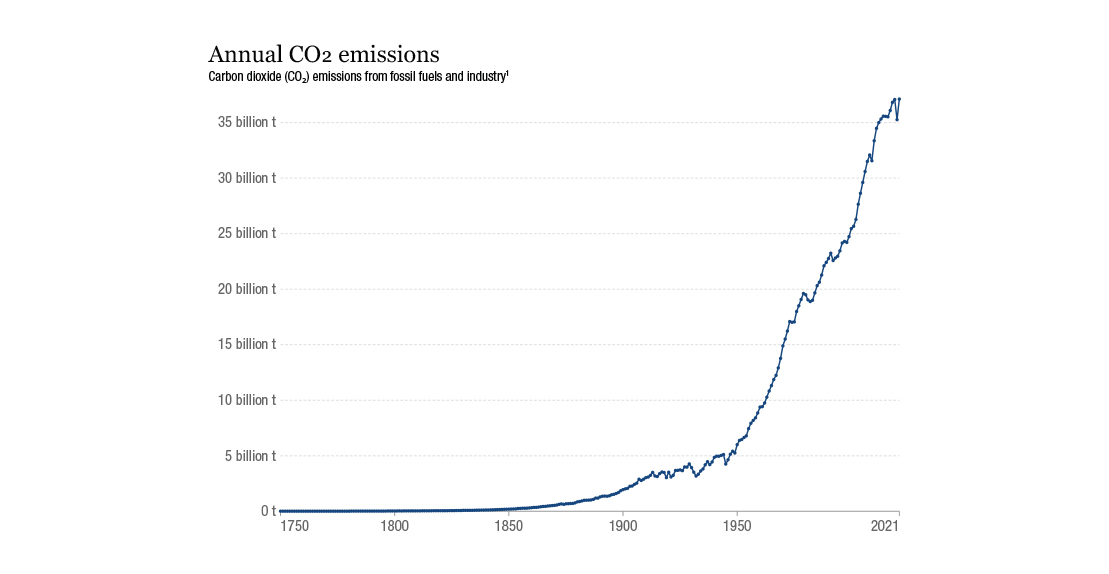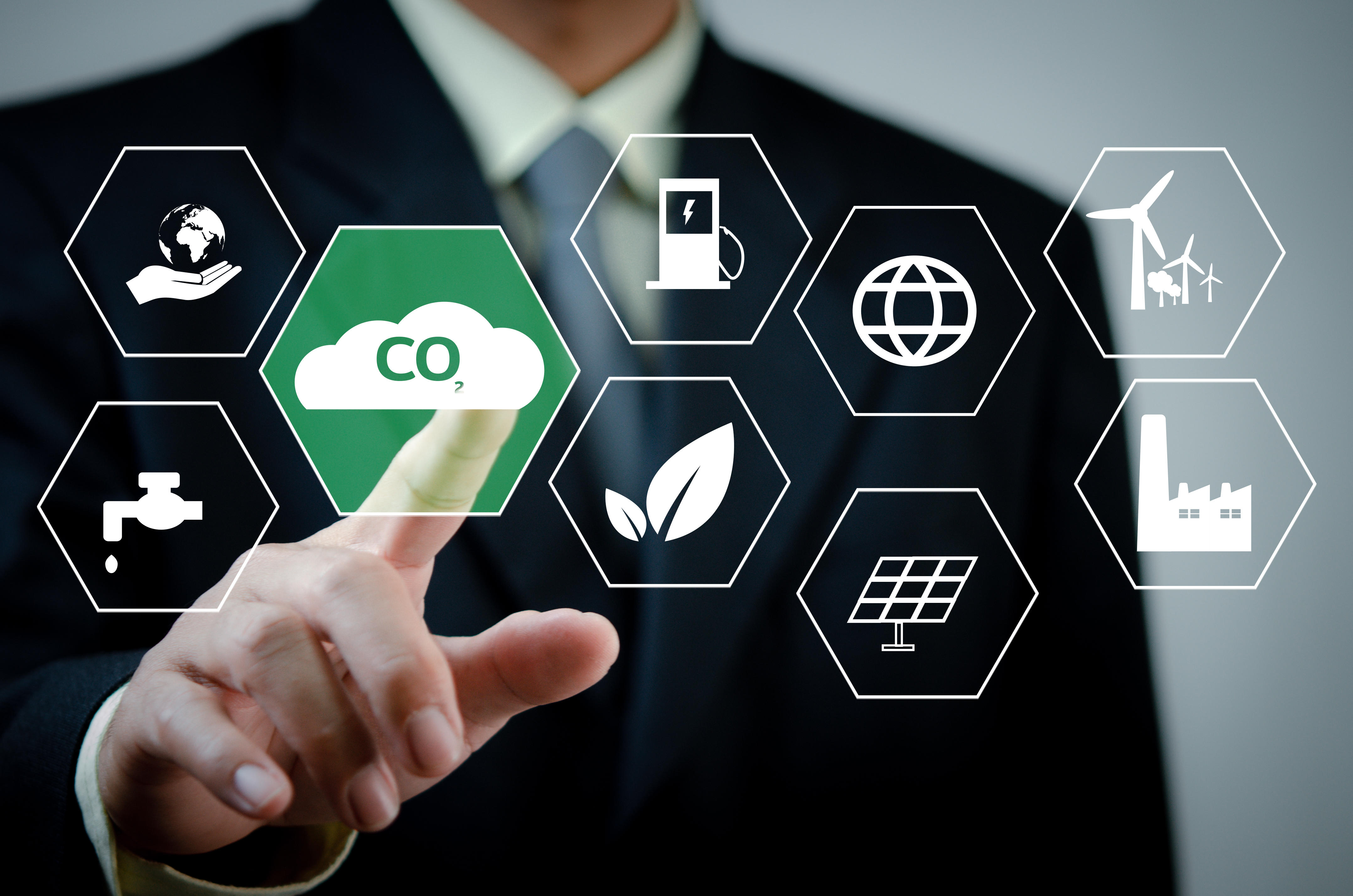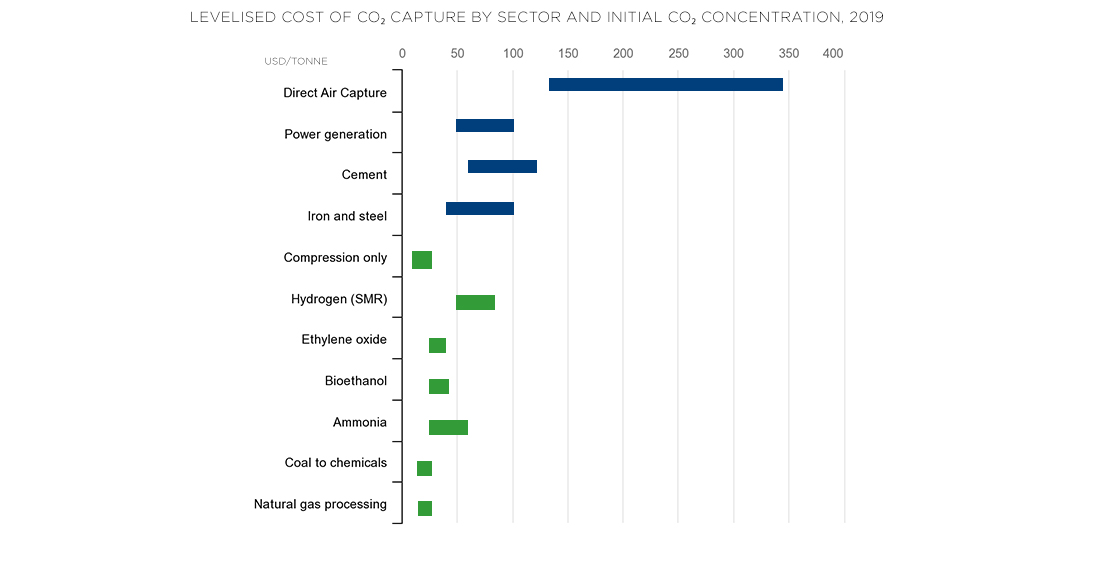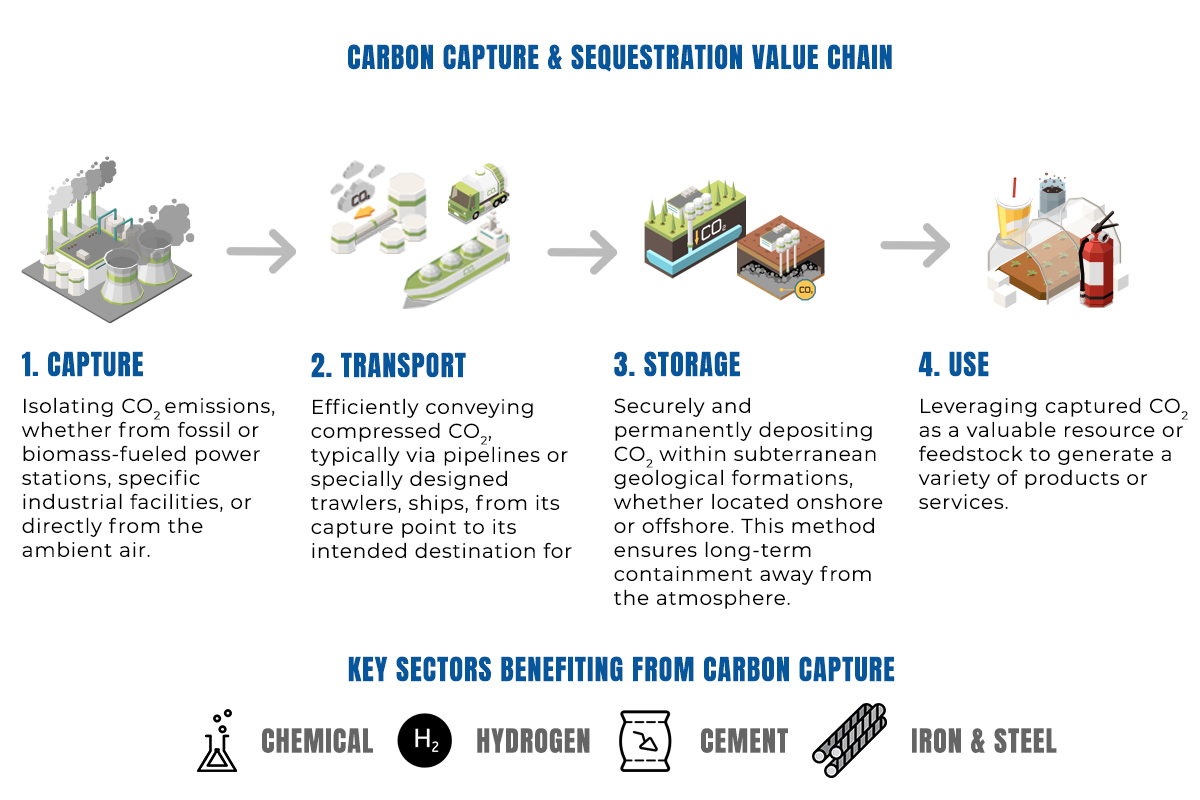Capturing Hope: Unleashing the Power of Carbon Capture to Combat Climate Change
I. Introduction
As the effects of climate change continue to intensify, finding effective solutions to combat this global crisis has become more crucial than ever. In recent years, Carbon Capture has emerged as a promising technology to mitigate greenhouse gas emissions and reduce the impacts of climate change. By capturing carbon dioxide emissions from various sources such as power plants, industrial facilities, and other hard-to-abate sectors, this innovative approach offers hope in the fight against climate change.
In this blog, we will explore the power of carbon capture and its potential to usher in a new era of hope and sustainability. From understanding the process of carbon capture to examining its benefits and challenges, join us on this journey as we delve into the world of capturing hope and unleash the potential of carbon capture to combat climate change.

Source: ourworldindata.org
II. Understanding Carbon Capture: A Key Tool in Climate Change Mitigation
Carbon Capture and Storage (CCS), with its potential to significantly reduce greenhouse gas emissions, is a powerful weapon in our arsenal against global warming. It is a process that captures carbon dioxide (CO2) emissions from large pollution sources such as power plants and other industrial facilities, preventing them from being released into the atmosphere. The captured CO2 is then either stored underground or utilized for various purposes.
The process of carbon capture involves several steps:
1. Capture: CO2 emissions are captured using methods such as post-combustion capture, pre-combustion capture, and oxy-fuel combustion.
● Post-combustion capture involves removing CO2 from the flue gases produced during the combustion of fossil fuels.
● Pre-combustion capture focuses on capturing CO2 before the fuel is burned.
● Oxy-fuel combustion burns the fuel in an oxygen-rich environment, resulting in a flue gas that is mostly CO2.
2. Transport: Once the CO2 is captured, it is transported, usually via pipelines or ships, to a suitable storage location.
3. Storage: The captured CO2 is stored in underground geological formations, such as depleted oil and gas reservoirs or deep saline aquifers. Alternatively, it can be used for enhanced oil recovery, where the CO2 is injected into oil wells to increase oil production and simultaneously store the CO2 underground.
4. Monitoring: The storage sites are monitored to ensure their integrity and prevent any leakage or environmental risks.
Carbon capture can be implemented across various industries, including power generation, manufacturing, and even direct air capture. However, it's crucial to remember that carbon capture is not a standalone solution to climate change. It should be part of a broader, comprehensive strategy that includes renewable energy, energy efficiency, and other sustainable practices.

III. The Role of Carbon Capture in Climate Change Mitigation
Carbon capture has the potential to play a significant role in reducing CO2 emissions and achieving climate goals. By capturing and storing CO2 emissions, we can reduce our carbon footprint and work towards a more sustainable future. It's a powerful technology that, when combined with other climate mitigation measures, can make a significant impact in the fight against global warming.
● Reduction of Greenhouse Gas Emissions: Carbon capture technology allows us to capture and store carbon dioxide emissions from various industrial processes, such as power plants and factories. By doing so, we can prevent these harmful emissions from being released into the atmosphere, thereby mitigating global warming. According to the Global CCS Institute, carbon capture technologies can capture over 90% of emitted CO2. (How Efficient Is Carbon Capture and Storage? | MIT Climate Portal, n.d.)
● Application to Existing Carbon Sources: Carbon capture can be applied to existing sources of carbon dioxide, such as from the burning of fossil fuels. This means that even industries heavily reliant on fossil fuels can take steps towards reducing their carbon footprint and transitioning towards cleaner energy sources.
● Carbon Utilization: Captured carbon dioxide can be used in various industrial processes, such as enhanced oil recovery or the production of chemicals and fuels. This presents an opportunity to create a circular economy, where carbon emissions are not only captured but also put to productive use.
● Economic Growth and Job Creation: The deployment of carbon capture technology can stimulate economic growth and create new job opportunities. According to a report by the International Labor Organization, the adoption of carbon capture technology could create millions of jobs globally (ILO - World Employment and Social Outlook 2018). In 2020, the worldwide market for carbon capture, utilization, and storage was estimated to be worth $1.9 billion. Looking ahead, it's predicted to experience substantial growth, reaching a value of $7.0 billion by 2030. This represents an impressive compound annual growth rate (CAGR) of 13.8% over the period from 2021 to 2030. (Allied Market Research, Aug 2021)
● Contribution to Achieving Climate Goals: Carbon capture has the potential to play a significant role in achieving climate goals. According to the International Energy Agency, carbon capture, utilization, and storage (CCUS) could reduce global CO2 emissions by nearly 20%, and its cost-effective deployment could help mitigate the cost of the energy transition by 70%. (IEA - Carbon Capture Utilisation and Storage)

Source: IEA.org
III. The Roadblocks and Constraints of Carbon Capture
Carbon capture, while a promising tool in the fight against climate change, is not without its hurdles and constraints. A primary challenge is the substantial cost associated with the deployment of carbon capture technologies. The process of capturing, transporting, and storing carbon dioxide demands significant investments in infrastructure and specialized equipment, which can discourage many industries and governments from large-scale adoption.

Source: IEA.org
Moreover, the energy required to operate carbon capture systems is substantial, which could potentially counterbalance the emission reductions achieved through the process. Therefore, it is crucial to find ways to minimize energy requirements and enhance the efficiency of carbon capture technologies for their widespread adoption.(IEA.org)
The storage of captured carbon dioxide also presents its own set of challenges. It is essential to identify suitable geological formations or other storage options that can securely and permanently store the captured carbon dioxide. The potential environmental risks and leakage associated with storage sites must be carefully considered and mitigated.(IEA.org)
Another significant limitation is the scalability of carbon capture technologies. While current projects have demonstrated the feasibility of capturing carbon dioxide emissions from individual industrial facilities, scaling up these technologies to capture emissions from entire sectors or regions is a complex task. It requires extensive planning, coordination, and investment
Despite these challenges and limitations, ongoing research, development, and innovation in carbon capture technologies hold significant promise. However, overcoming these challenges will require a collaborative effort between governments, industries, and research institutions to overcome the barriers and unlock the full potential of carbon capture in our fight against climate change
IV. The Future of Carbon Capture: Potential Advancements and Opportunities
The future of carbon capture technology is a beacon of hope in our fight against climate change. With continuous advancements in technology, the potential for carbon capture to mitigate the effects of climate change is immense. Here's a glimpse into the future of carbon capture:
● Direct Air Capture (DAC) Technologies: One of the most promising advancements in carbon capture is the development of DAC technologies. These systems can capture carbon dioxide directly from the atmosphere, providing a solution to reduce greenhouse gas emissions beyond just industrial sources. According to a report by the International Energy Agency (IEA), DAC technologies could capture as much as 10 gigatons of CO2 per year globally by 2050 (IEA.org/direct air capture).
● Carbon Utilization: The future of carbon capture is not just about storage but also utilization. The captured carbon dioxide can be converted into valuable products such as fuels, chemicals, building materials, and even carbon-neutral synthetic fuels. This approach not only reduces emissions but also promotes a circular economy where carbon dioxide is a resource, not a waste product.
● Advancements in Materials and Engineering Techniques: Research is underway to develop more effective sorbents and membranes for carbon capture. These advancements aim to improve the efficiency and scalability of carbon capture technologies. (A Review of Material Development in the Field of Carbon Capture and the Application of Membrane-based Processes in Power Plants and Energy-intensive Industries | Energy, Sustainability and Society, n.d.)
● Integration with Renewable Energy Sources: Efforts are being made to integrate carbon capture systems with renewable energy sources to make the process more sustainable and energy-efficient.
● Collaboration and Investment: The future of carbon capture also presents opportunities for collaboration between industries, governments, and academia. Investment in research and development, policy support, and public-private partnerships can accelerate the deployment of carbon capture technologies on a larger scale.

Source: Bussiness.hsbc.com
V. GAS LAB: Leading the Charge in Carbon Capture Technology
GAS LAB, a renowned player in the industrial gases solutions sector, is spearheading the adoption of Carbon Capture and Storage (CCS) technology. Our groundbreaking solutions, which can be retrofitted to existing infrastructure, enable industries to embark on carbon capture initiatives without jeopardizing their initial capital investments.
GAS LAB's dedication to delivering intelligent, secure, and environmentally-friendly solutions is revolutionizing the industrial approach to CO2 emissions. With a wealth of global experience spanning decades, our technologies not only curtail emissions but also boost the overall efficiency and sustainability of the industries they cater to.
In the journey towards a future with lower carbon emissions, our role is becoming increasingly pivotal. Our trailblazing solutions are aiding industries in their transition towards a more sustainable future. To delve deeper into how GAS LAB is influencing the future of carbon capture, visit our website here.
In Summary
In the face of the escalating climate crisis, Carbon Capture and Storage (CCS) technology, such as that pioneered by GAS LAB, offers a viable solution to significantly reduce greenhouse gas emissions. A key advantage of our technology is its retrofit capability, allowing existing plants to adopt this solution without substantial initial capital investment.
We invite you to join us in our mission to combat climate change. Whether you're an industry leader, a government body, or an individual passionate about climate action, there's a role for you to play.
Get in touch with us at GAS LAB to learn more about how you can be a part of this climate solution. Together, we can shape a sustainable and resilient future.
Reference Links
(1) How efficient is carbon capture and storage? | MIT Climate Portal. (n.d.). MIT Climate Portal
(2) ILO - World Employment and Social Outlook 2018
(3) Allied Market Research – Aug 2021
(4) IEA - Carbon Capture Utilisation and Storage
(5) Energy.gov - Challenges for Carbon Capture
(6) Nature - Carbon capture: Miracle machine or white elephant?
(7) Carbon Brief - Explainer: 10 ways ‘negative emissions’ could slow climate change
(8) World Bank - Climate Investment Opportunities Report
(9) IEA.org/direct air capture
(11) https://www.business.hsbc.com/en-gb/insights/sustainability/carbon-capture-s-crucial-decade